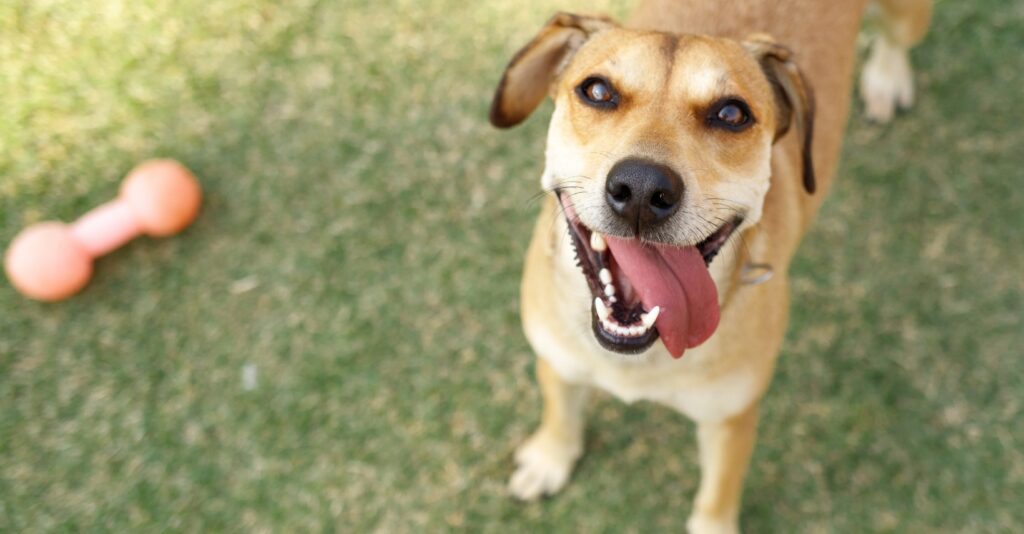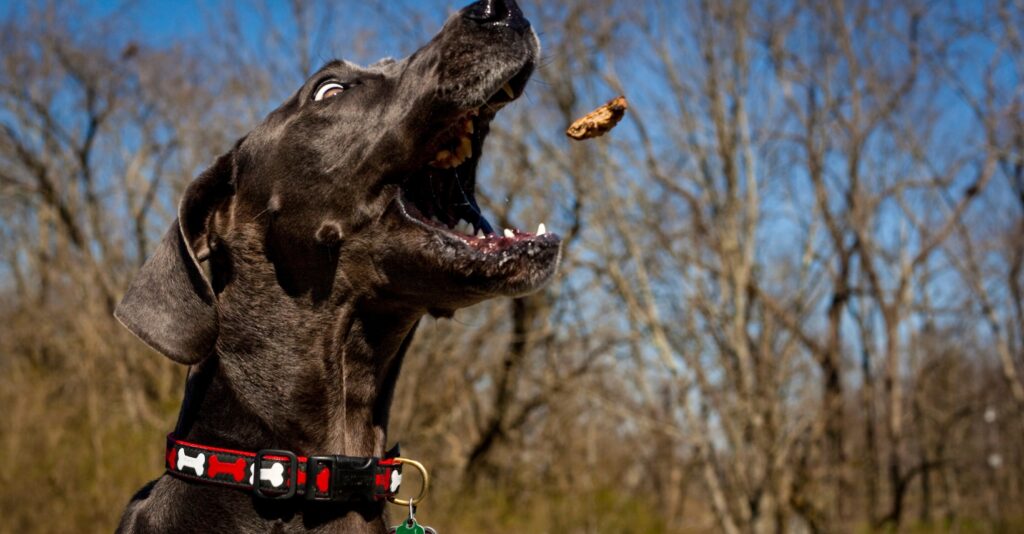Keeping your adult dog sharp: Dog training for mental stimulation

Whether you recently adopted an adult dog or have had one for years, it’s never too late to improve their manners and build a stronger relationship.
Here you will find advice from dog trainers Lisbeth Plant and Sandy Middleton. From managing your dog’s behaviour to mental stimulation and interactive play, we’ve got you covered.
By following these tips, you’ll be well on your way to building a stronger bond with your dog and enjoying happier moments together.
Discover how to train your adult dog with tips from professional dog trainers about:
- Improving your dog’s manners – Lisbeth Plant, Cowichan Canine Behaviour & Training
- Mental stimulation: Keeping your dog’s mind active through playtime – Sandy Middleton, Best Friends Dog Training and Behaviour

Improving your dog’s manners
Lisbeth Plant, Cowichan Canine Behaviour & Training
How can I tell that my dog is finally an adult?
If by “adult,” we mean “finally trained” or “calmed down”, well, that depends on your dog’s individual personality traits and how much training and mental stimulation you have been giving your dog – and continue to give them.
Mental and physical stimulation are necessary for a calm and well-behaved dog to develop.
What types of unwanted behaviour have you seen start to develop at this age?
Almost anything! For example, anxieties can become more pronounced. Puppies that have perhaps been anxious but avoiding scary things when they were younger, like other dogs or strangers, may start acting out with barking and growling (“aggression”). Puppies rarely “grow out of” anxieties – they grow into them.
Other examples are:
- leash reactivity if the dog has not been growing up with enough social stimulation with other dogs on and off leash;
- barking at passers-by from the yard if the dog has been left out in the yard to develop this habit;
- barking at the doorbell if the dog has been left to develop this habit; and
- pulling on leash: you may have unintentionally taught your dog that pulling gets them where they want to go if you have been walking them on a tight leash.
Why do I still need to train when my dog has reached adulthood and understands all the cues?
You need to continue rewarding desirable behaviours throughout your dog’s life. Behaviours that are consistently NOT rewarded, are likely to become less and less reliable, and they will eventually go into extinction. Indeed, removing the reward is one of the components of behaviour modification when we extinguish undesirable behaviours.
How often should a behaviour be rewarded? Research has shown that once a behaviour has been taught, a 50% rate of reinforcement (i.e. reward every other time the dog performs the behaviour) creates the strongest performance.

Mental stimulation: Keeping your dog’s mind active through playtime
Sandy Middleton, Best Friends Dog Training and Behaviour
Play is not just for puppies. Adult dogs need and thrive on play too.
Play offers physical and mental stimulation, enhances your training, relieves stress, boosts mood, builds confidence, and provides safe and enjoyable outlets for the expression of natural behaviours. Most importantly, play enriches your relationship and is a powerful expression of connection, cooperation and fun between people and dogs.
There are three types of play you can explore with your dog: toy play, food play, and social play.
Tug toy play
Active toy play can give your dog a wonderful physical and mental workout. By adding rules and structure, and by using toy play to teach your dog new behaviours, you can increase mental stimulation so that your dog has to use more of their brain to play the game. Toy play also gives dogs healthy outlets for behaviours such as chasing, retrieving, biting, etc.
Tug is loved by many dogs. It can provide high-intensity exercise even if you are stuck indoors. To ensure your tug play is safe and enjoyable for both you and your dog:
- Choose big, soft, and squishy toys. Avoid toys that are hard and small
- Choose long toys attached to a line or rope and play with the toy by moving it on the ground. Long toys give your dog lots of biting surface away from your hand. If your dog’s teeth do accidentally brush your skin, neutrally stop play for a few seconds with the toy behind your back, and then resume.
- Play close to the ground and avoid lifting your dog. Swinging in the air with front feet off the ground for a prolonged time is not pleasant for most dogs and decreases their control over their movements.
- Mimic the movement of prey. The action and movement of the toy are important in developing your dog’s interest in playing. Start at a distance away from your dog to encourage them to start chasing!
- Avoid fighting your dog for possession of the toy. Exchange the toy for food in a fun way by tossing treats for your dog to chase and take the toy when your dog is not looking. Or teach a release on cue. You can also use two toys. Let your dog have the toy, and then use a second toy to keep inviting him to play.
- Put the toy away when you are finished. Reserve the tug toy for the special times you and your dog play together.

Food play
Instead of just handing your dog a treat, you can use food more creatively in your training to ignite your dog’s prey drive and increase their excitement and engagement in working with you:
- Toss the treat so that it skitters across the floor and your dog gets to chase and pounce on it. You can add suspense by teasing your dog about which way you might toss the treat.
- Toss food in different directions, initiating a fast-paced game of chase and hunt. Some dogs will love chasing it for a distance, and others will give up if you toss it too far. Know your dog and always work at a level they enjoy so that they are happy and successful.
- Toss the treat in the air so that your dog can catch it. Keep your dog guessing as to which direction you will toss!
Tossing food adds another element to your training because you can then reward your dog for choosing to return to you and continue working.
Teach your dog it’s rewarding to come back to you
- Toss a treat on the ground and then move a little away facing your dog
- As your dog turns back to you, mark (with a click or a verbal marker) and toss the treat behind you between your legs so that your dog chases the treat by going through your legs. You want the dog to find the treat easily so don’t toss it too far away.
- Whirl away in the opposite direction and repeat.
- After a few repetitions, start to increase the distance. While they are getting the treat, run further away in the opposite direction so that this time they have further to go to come back
- Every fifth time, close your legs and cue your dog to do something else such as sit, or any other skill you want to practice.
Social play
Social play takes place without food or toys. It’s just you and your dog playing together, enjoying each other’s company, and having fun. This type of play can be harder to learn, and you will want to experiment to see what your dog enjoys, making sure you don’t overwhelm or overstimulate them.
Start small and go slow. Does your dog enjoy gentle pushes which could then turn into a game of chase? Would your dog enjoy climbing over your body if you lie on the floor? What would happen if you gently shoulder-checked your dog? Can you encourage your dog to engage with you by making funny noises? Does your dog enjoy belly rubs or would they like to chase your hand as you move it along the floor?
Find one game your dog enjoys and build from there.

It is all about quality time and connecting with your dog!
Training your adult dog helps with their behaviour and strengthens the bond between you. You can build a deeper connection with your adult dog and have a successful training journey with consistency and patience.
If you are lucky enough to care for a senior dog, check out Training your senior dog: helping them live their best last years.
Happy training!
For more expert tips and guidance on training and caring for your dog, be sure to explore: